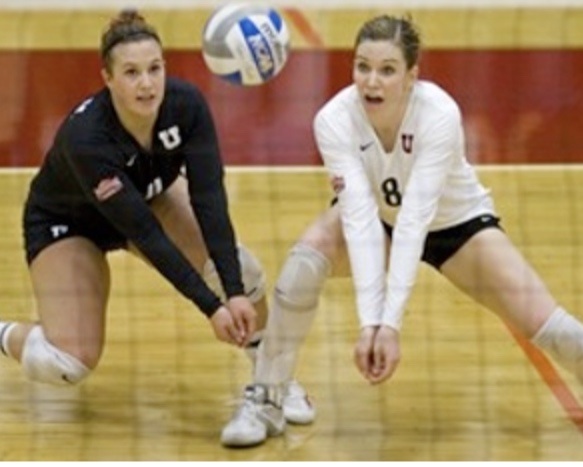Vision Training
How are you training your player’s vision?
Vision in volleyball
When we consider vision in our sport, we are focused on our player’s eyes and what they are watching. Typically, coaches do not spend enough time on drills that specifically train eye work. Also, coaches may not place themselves in a position to provide feedback on this aspect of our sport. This post will review key elements of vision training and provide links to information that will explore vision training.
Vision training is designed to train a player’s eyes, what they watch and when, and what they do with that information. Examples of eye work:
A serve receive passer watches the server’s approach, arm swing, and hand contact on the ball. This will provide information that would include the depth of the serve, the rotation of the ball, and, therefore, the movement of the ball.
A blocker will need to watch the pass, then the set, while also being aware of their primary hitter’s movement. How the blocker sees (how long they watch the ball in each phase) and analyzes this information, then makes decisions, will directly lead to success or failure as a blocker.
A hitter will also need to analyze a pass and then the setter’s movement to properly anticipate the quality of set they will receive.
Vision Articles & Videos
Mike Wall with Gold Medal Squared wrote an article that supports eye training for all aspects of our game. Read this piece at: https://www.goldmedalsquared.com/blog/seeing-is-everything/
Next, an excellent article was published in the Fall 2019 edition of Coaching Volleyball. Sharon Clark (Butler), Mary Wise (Florida), and Heather Olmstead (BYU) discuss how they train blocking. I highly recommend taking time to read this article:
https://view.joomag.com/coaching-volleyball-magazine-cvb-issue-5-2019/0559161001571057174/p12?short
John Kessel discusses reading in volleyball and proposes that this may be the most important skill we should teach: https://www.teamusa.org/USA-Volleyball/SportKit/Core-articles-for-all-ages/The-most-important-skill-in-volleyball
Karch Kiraly has multiple videos on Read the Game (video clip #1,#2, and #3). He provides an overview and examples of reading at various levels. Links to these videos are found on our website in the section on Vision: https://www.volleyballwisdom.com/nuggets-of-wisdom/category/vision
Training vision
The most important recommendation I can pass along is for your to allocate the proper amount of time to vision training. Heather Olmstead (Coaching Volleyball - Fall 2019) reminds us to be patient in this process. Though the article focuses on blocking, its message applies to all vision skills. It may take players time to learn how to use their vision, but it will improve and they will see success.
As you implement these drills, make sure a coach is watching the player’s eye sequencing and providing feedback. In my experience, players have a difficult time retraining themselves to NOT watch the ball. They need your feedback to become aware of how they are using their eyes. Video that is filmed so they can see their eye/head movement will also be helpful.
In blocking: Watch your players - see how long they watch a pass, or the set. When do they actually see the hitter? You will find that many players only see the hitter AFTER the hitter has jumped. This means that they moved to block based on the set without any information about the hitter’s angle or speed of approach. Not surprisingly, this leads to blocks that are poorly positioned. This, in turn, leads to blocks that stress the other defenders.
For beginning and intermediate players, when you run a drill that is focused on eye work, I would suggest that the drill be designed as a slow progression. Allow players time to actually practice the eye sequencing and become aware of what they are watching. Next time, speed up the drill, and check to see that the sequencing is working. Finally, repeat the drill in a “live” format, 6 on 6. Throughout each step, provide feedback.
This drill progression can be applied to all aspects of the game. In particular, the sooner this training is applied to blocking, digging, defensive movement, and coverage, the more success your team will experience.
Study Vision training
I recommend that every coach study vision training. Look for clinics and other resources that help you increase your knowledge on how to teach eye work. Designing proper drills and providing quality feedback should be a strength of every volleyball coach.
